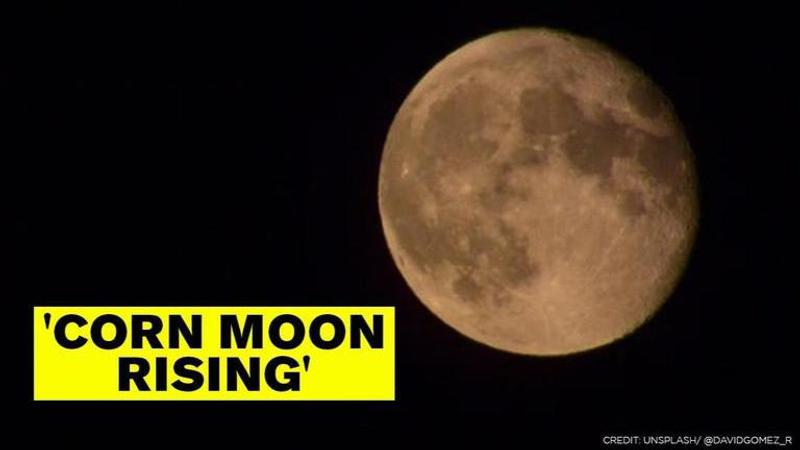Published 18:30 IST, August 31st 2020
September's last ‘Full Corn Moon’ marks end of summers, starts autumn equinox
September’s Full Moon that marks summers' end is also known as the harvest moon, a term used by the Latin Americans in context to corn harvest season.

On September 2, a ‘Full Corn Moon’ or ‘Full Harvest Moon’ will rise, marking the beginning of the autumn equinox. September’s full Moon is also known as the harvest moon, a term used by the Latin Americans in context to corn harvest season. According to NASA, this full moon will be the last of 2020, marking the end to the summers this year. Corn Moon will attain maximum brightness at 1:22 a.m. EDT on Wednesday. In India, it will rise at 9:38 am EDT on September 1 and set at 10:51 am on September 2. For the East coast, it will lower below the horizon at approximately 8:07 p.m. EDT.
The Autumn equinox begins on September 22 or 23, and the full moon falls early in the month, with October hosting the Harvest Moon. As per NASA’s release, September’s moon is “the Corn, Fruit, Barley, and Hungry Ghost Moon.” In a press release, NASA said that the full moon would mark “the end of Onam, the start of Pitri Paksha, Modhu Purnima, Binara Pura Pasalosvaka Poya, and the Gaile, Ladee, and Osiris-rex moon”. Rising exactly "opposite" the Sun, this moon will remain full for about three days. According to the Maine Farmer's Almanac journal, Native Americans used different names for full moons in the 1930s and they were published accordingly to differentiate the type of the full moon. The Algonquin tribes in the northeastern USA called the September moon as Corn moon as this was the time they harvested their main staple crops of corn, pumpkins, squash, beans, and wild rice.
“This full Moon corresponds to the Chinese Hungry Ghost Festival. The seventh month of the Chinese calendar is the Ghost Month and the fifteenth day of this month, a full moon day is called Ghost Day, on which ghosts and spirits, including those of deceased ancestors, come out to visit the living,” NASA said in the release.
10-day celebration of Onam ends
“Hindus in Kerala, India, mark the end of the 10-day celebration of Onam, which began on August 22, 2020, with this full moon,” it added. “Full Moon also marks the start of Pitri (or Pitru) Paksha (fortnight of the ancestors) during which Hindus pay homage to their ancestors, especially through food offerings. Pitri Paksha starts with the full moon in the lunar month of Bhadrapada and ends with the new Moon,” NASA said. Further, citing the relevance of the September moon in Thailand, NASA said, “For some Buddhists in Bangladesh and Thailand, this full Moon is Modhu Purnima, the Honey Full Moon or the Honey-offering Festival.” It added, “In Sri Lanka, this full Moon is the Binara Pura Pasalosvaka Poya Day, commemorating the establishment of the Buddhist Bikkhuni Order.”
[The Corn Moon sets over the early morning desert in Arches National Park, Utah in 2018. Credit: NASA/Bill Dunford]
Updated 18:30 IST, August 31st 2020






